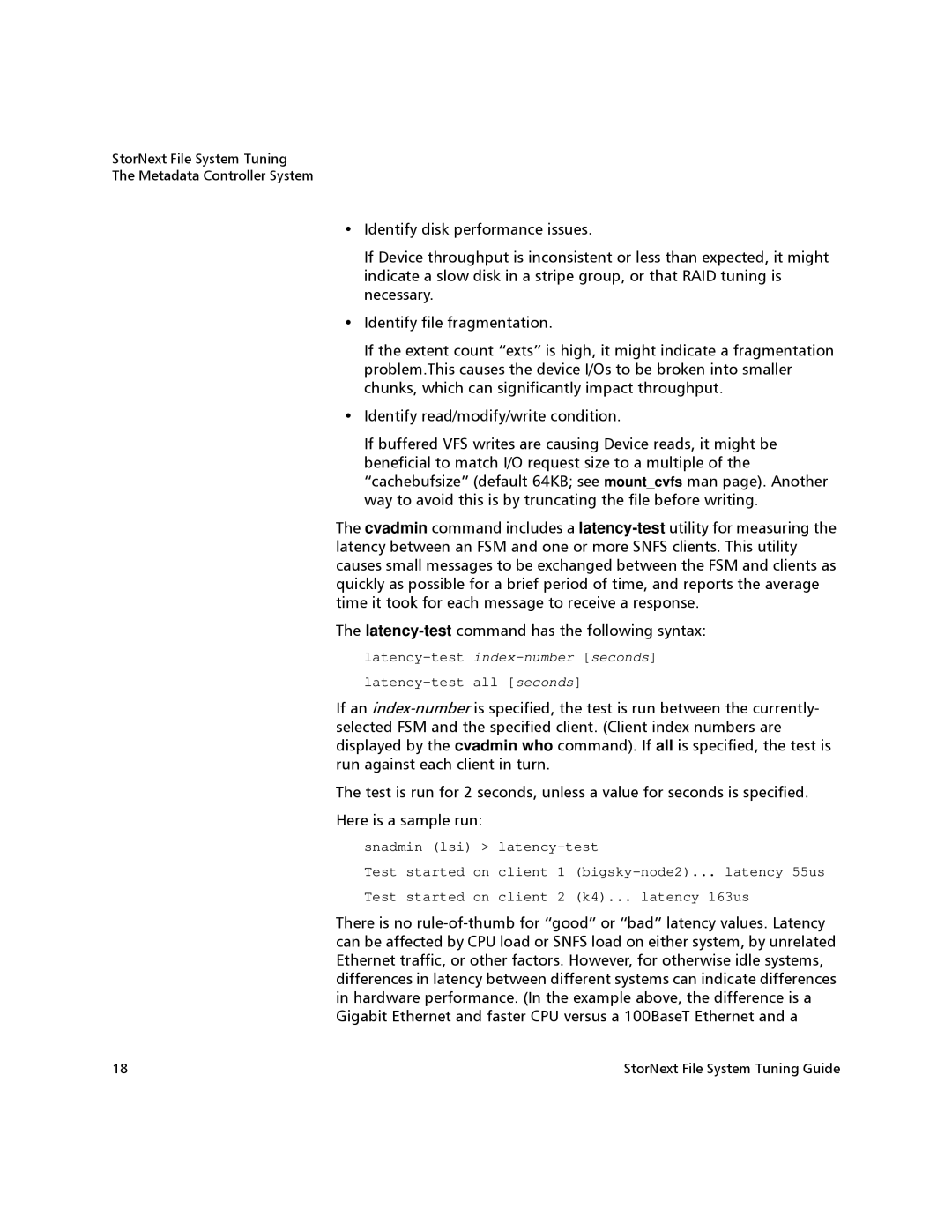StorNext File System Tuning
The Metadata Controller System
•Identify disk performance issues.
If Device throughput is inconsistent or less than expected, it might indicate a slow disk in a stripe group, or that RAID tuning is necessary.
•Identify file fragmentation.
If the extent count “exts” is high, it might indicate a fragmentation problem.This causes the device I/Os to be broken into smaller chunks, which can significantly impact throughput.
•Identify read/modify/write condition.
If buffered VFS writes are causing Device reads, it might be beneficial to match I/O request size to a multiple of the “cachebufsize” (default 64KB; see mount_cvfs man page). Another way to avoid this is by truncating the file before writing.
The cvadmin command includes a
The
latency-test index-number [seconds]
If an
The test is run for 2 seconds, unless a value for seconds is specified. Here is a sample run:
snadmin (lsi) > | |||
Test started on | client | 1 | |
Test started on | client | 2 | (k4)... latency 163us |
There is no
18 | StorNext File System Tuning Guide |
